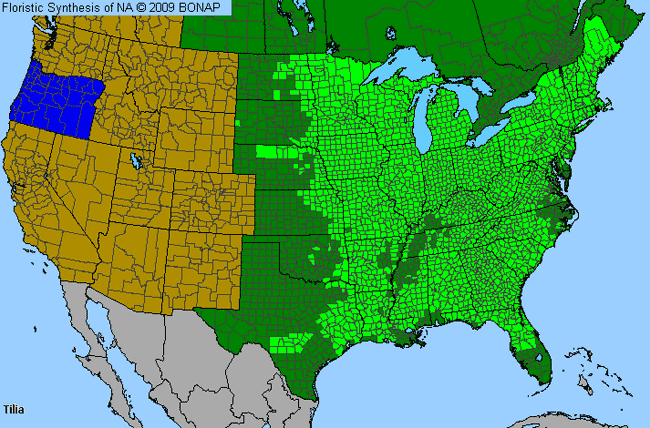Basswood, Linden (Tilia)

Basswood, Linden Genus Details

Lindens have deciduous leaves that are alternate, pale yellow and heart-shaped. The genus is marked by "hairy" twigs and leaves. Fruits are typically roundish, pea-sized woody shapes called drupes. The bark in younger trees is greenish-gray or gray, and becomes dark grayish and furrowed as the trees age. The large, creamy-white, fragrant flowers are pollinated by flies and bees during the day, and by moths nocturnally. The trees are abundant pollen producers.
Basswood, Linden Allergy Info

Basswoods and lindens have significant allergenic potential. Pollen travels far from the sources, and elicits strong symptoms during skin tests of allergy patients.
Basswood, Linden Pollen Description

Pollen grains are slightly paraisopolar, peroblate; the amb oblate or circular and 3-colporate. The sexine is finely reticulate to pitted and the intine is thickened beneath the apertures to form an oncus.
The pollen grain is usually 20-28 x 35-47 micrometers.
Species in This Genus

Allergenicity Legend:
 Mild Allergen |
Mild Allergen |
 Moderate Allergen |
Moderate Allergen |
 Severe Allergen |
Severe Allergen |
 Allergy Test Available
Allergy Test Available
Basswood, Linden (Tilia) is a genus of the TILIACEAE family.
This genus includes the following allergenic species:
This genus includes the following allergenic species:













